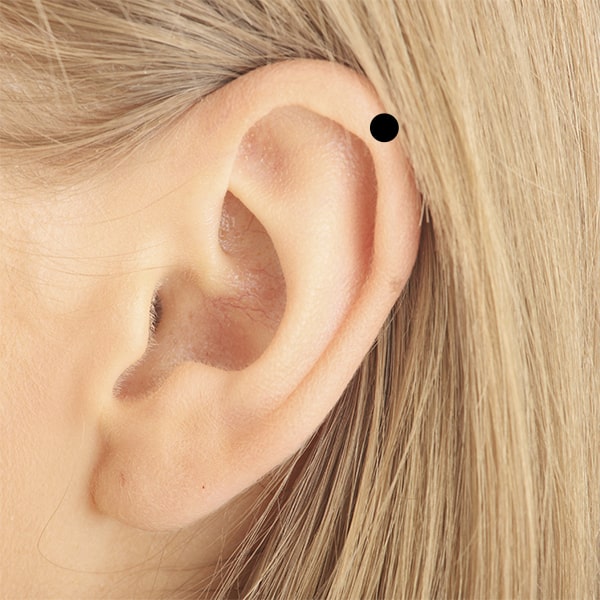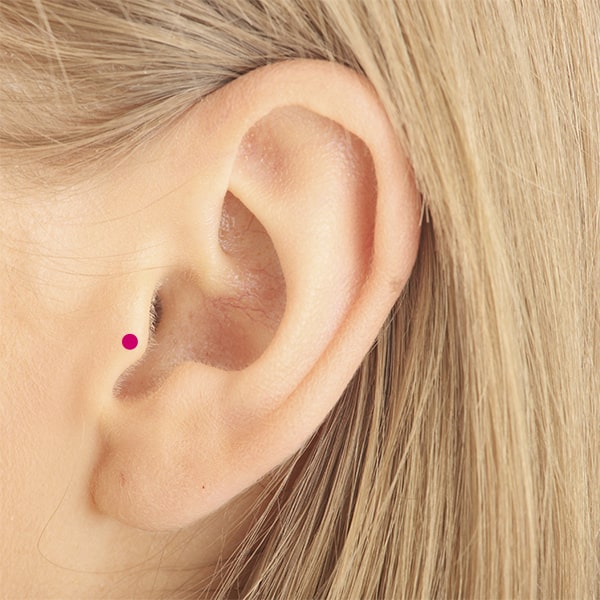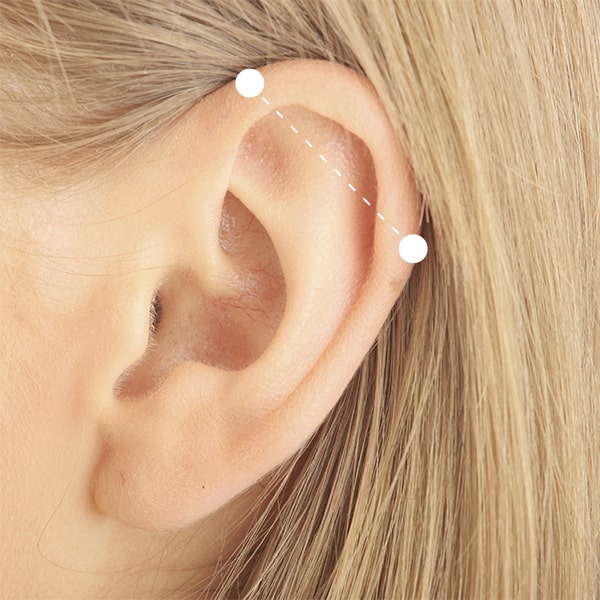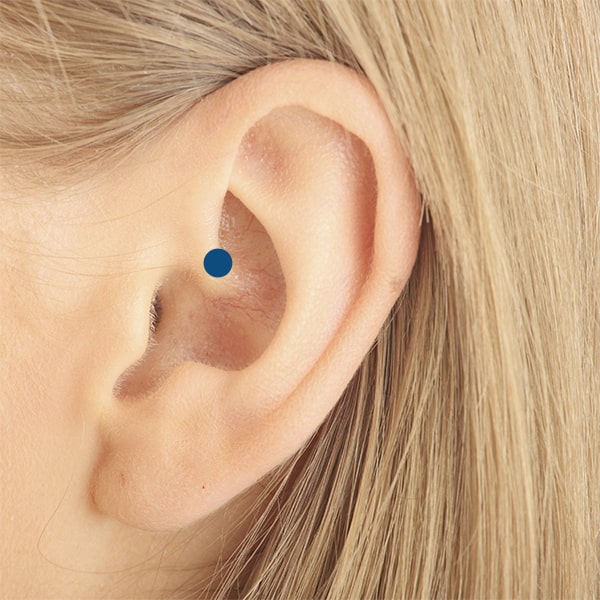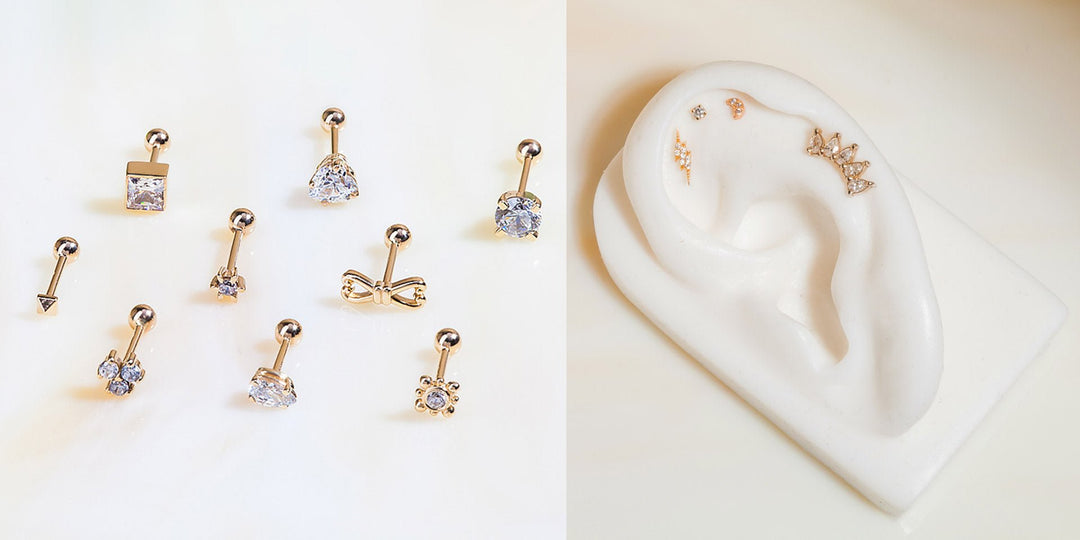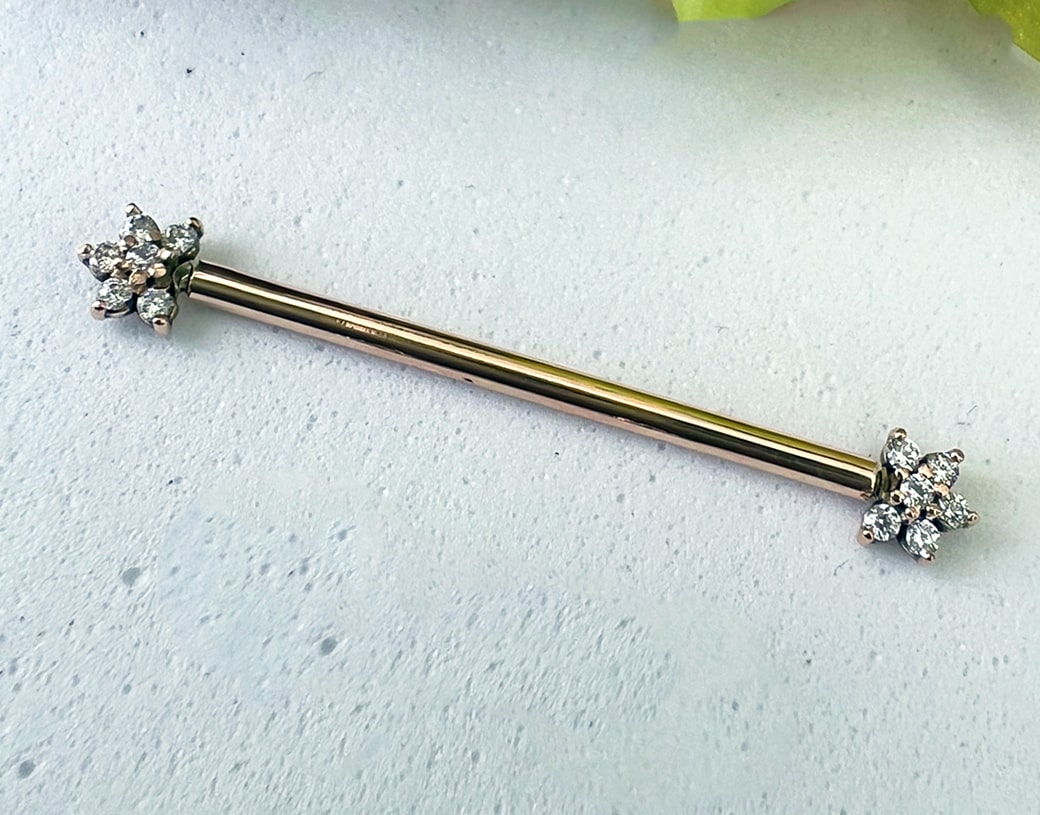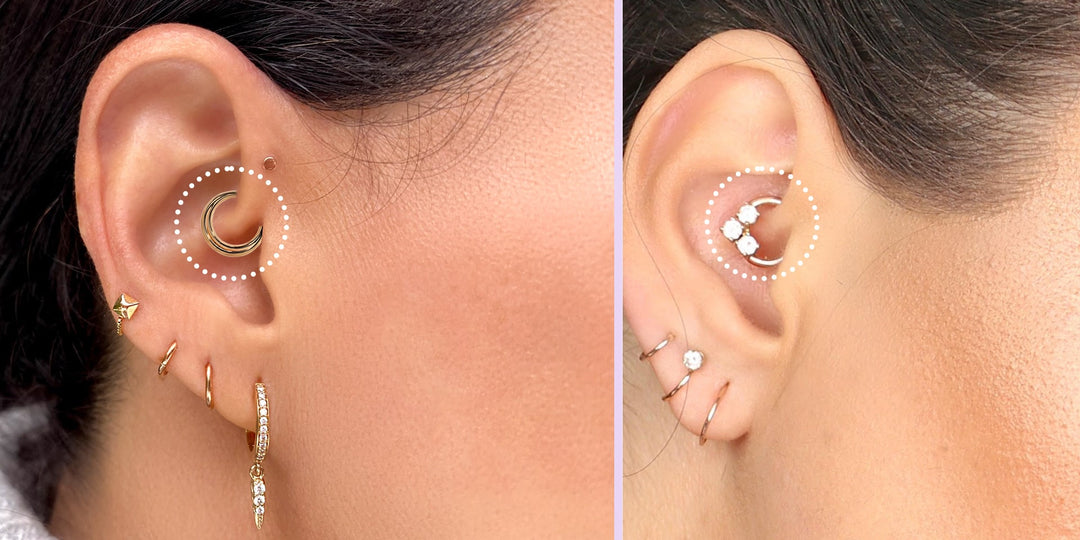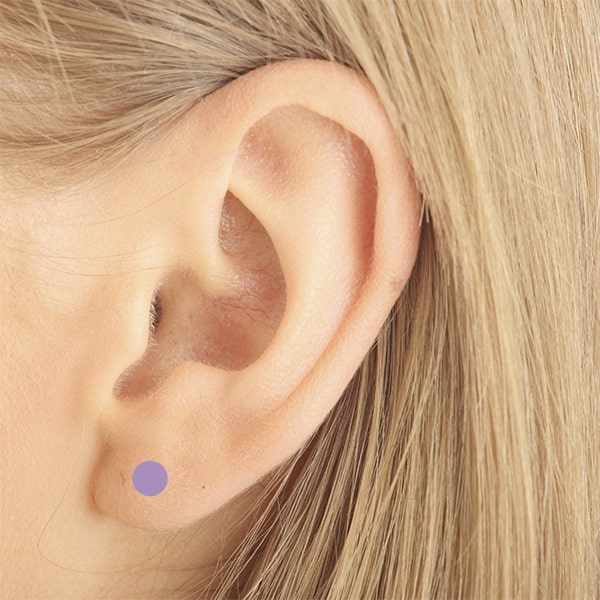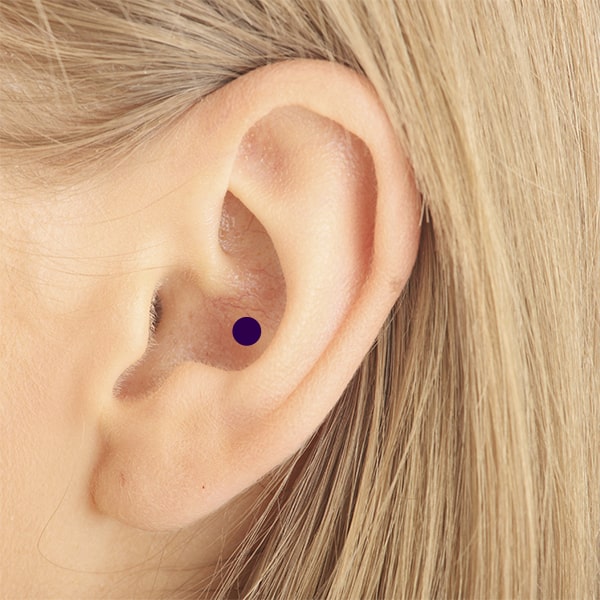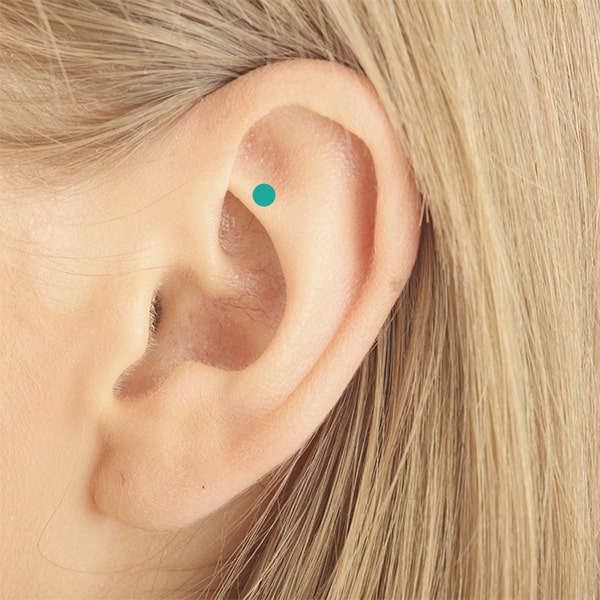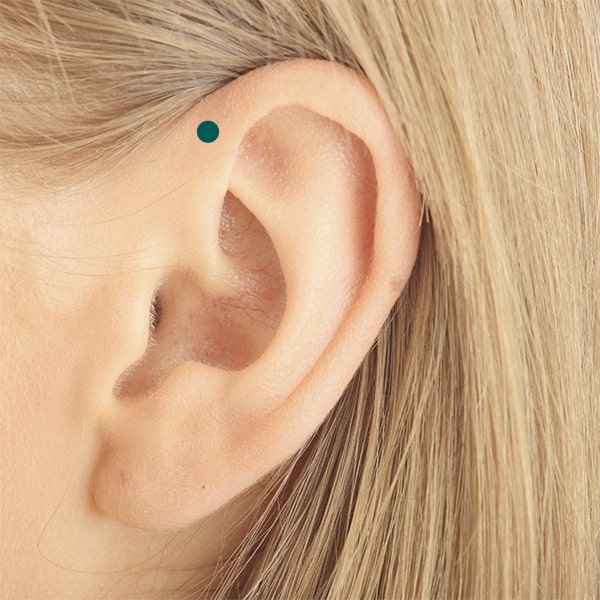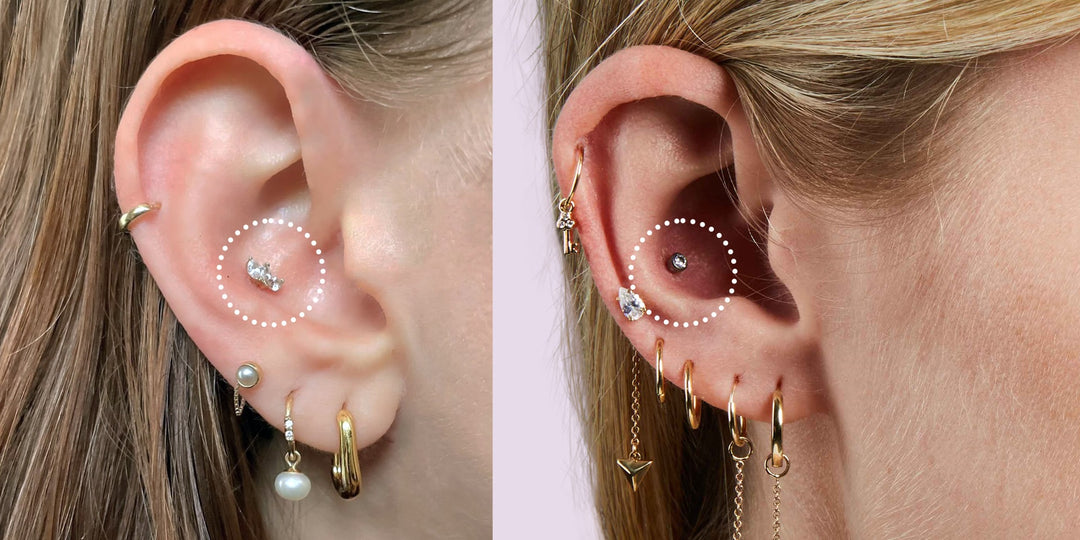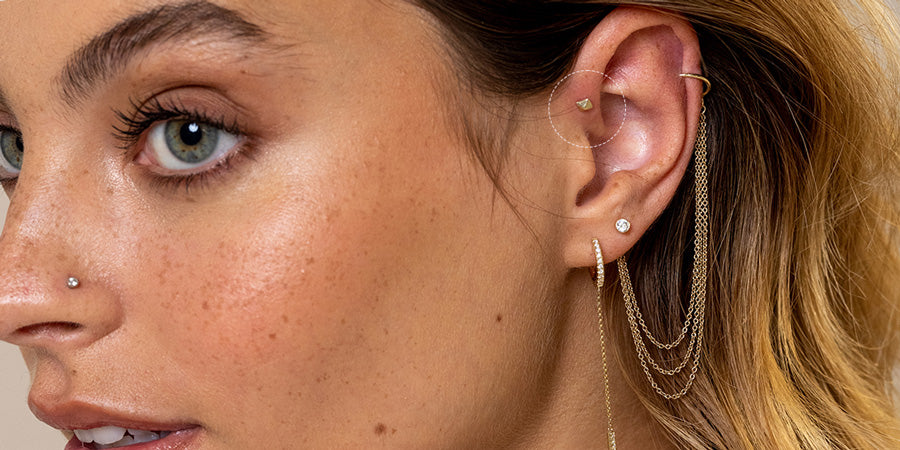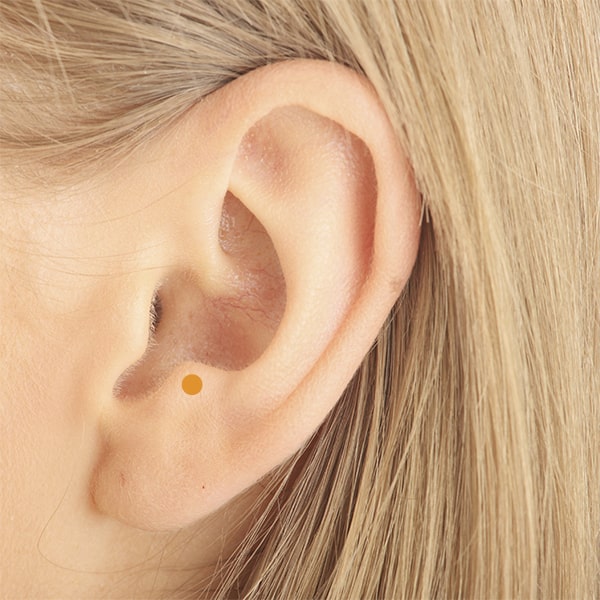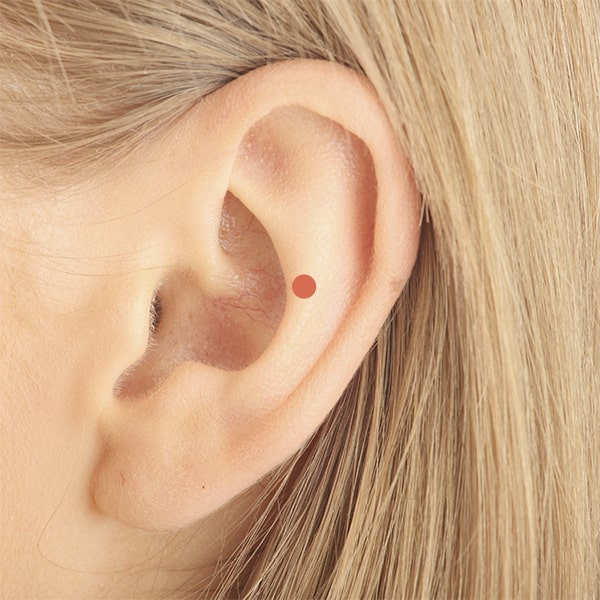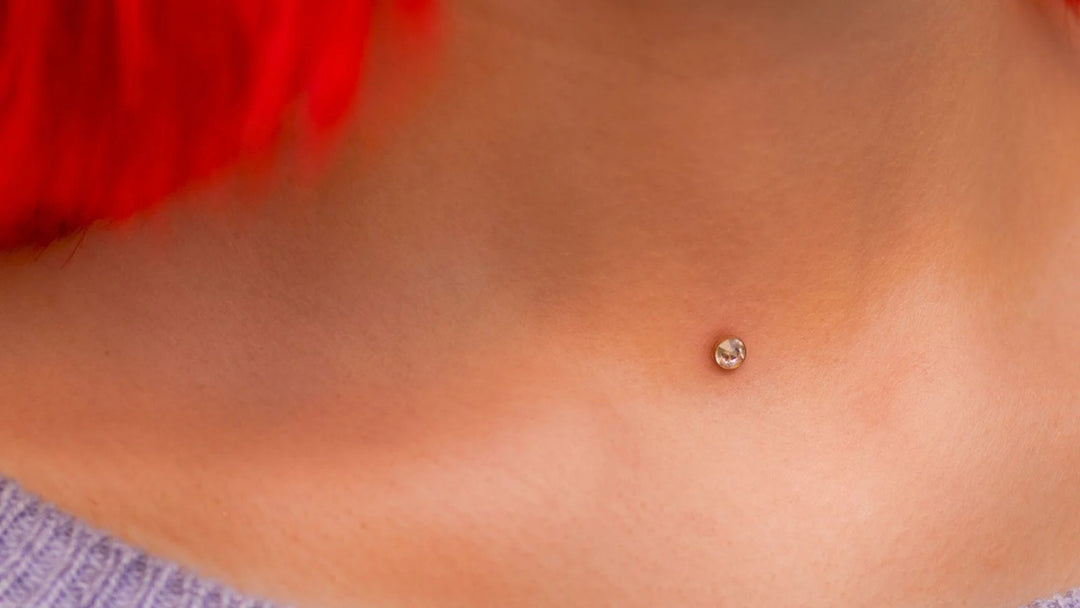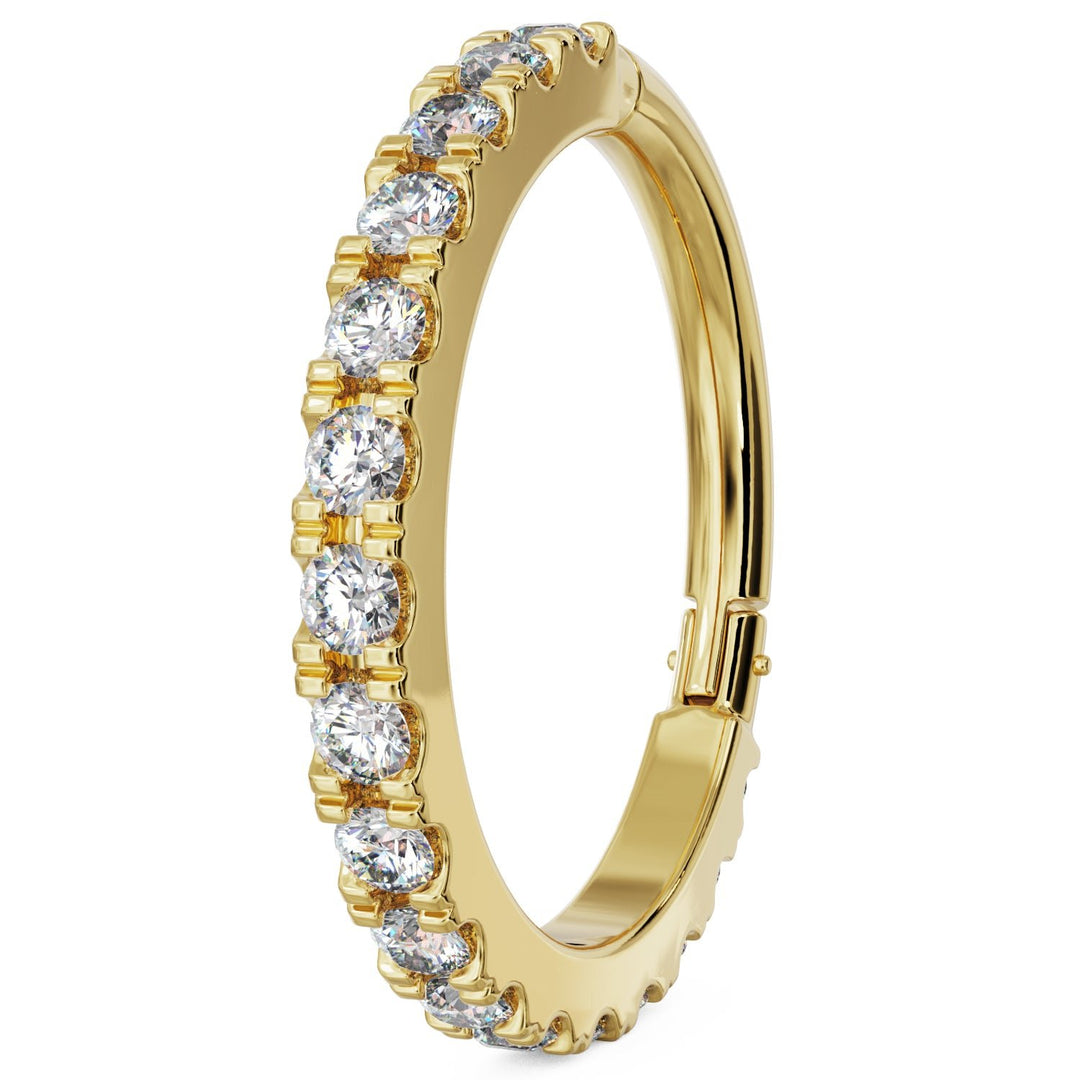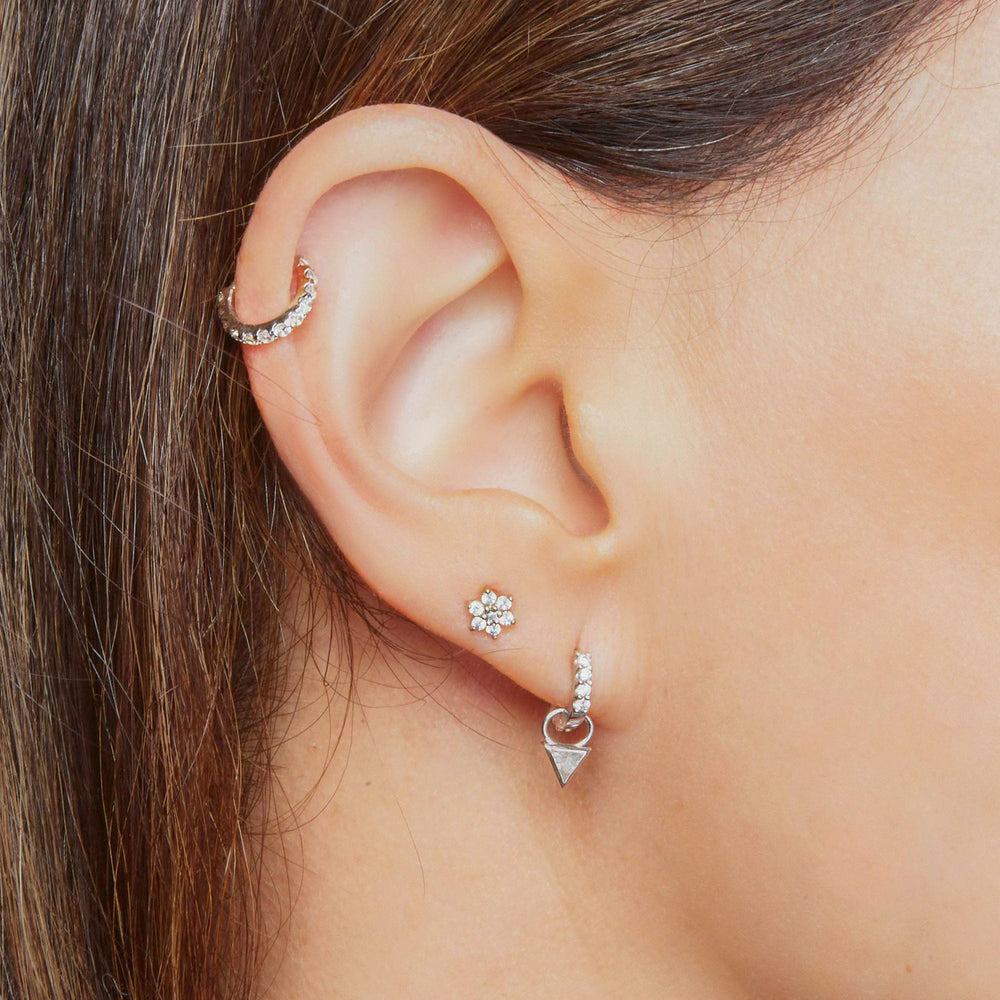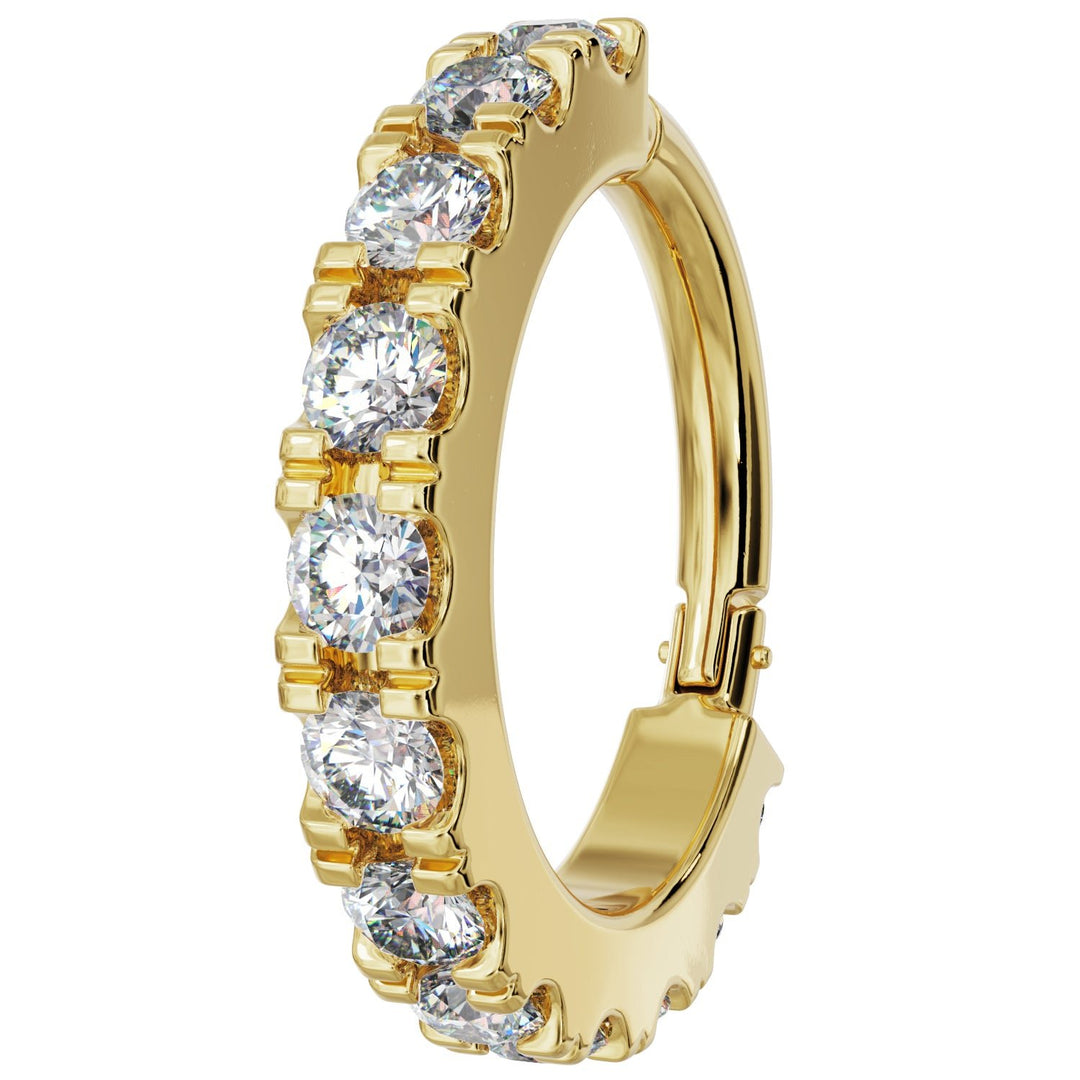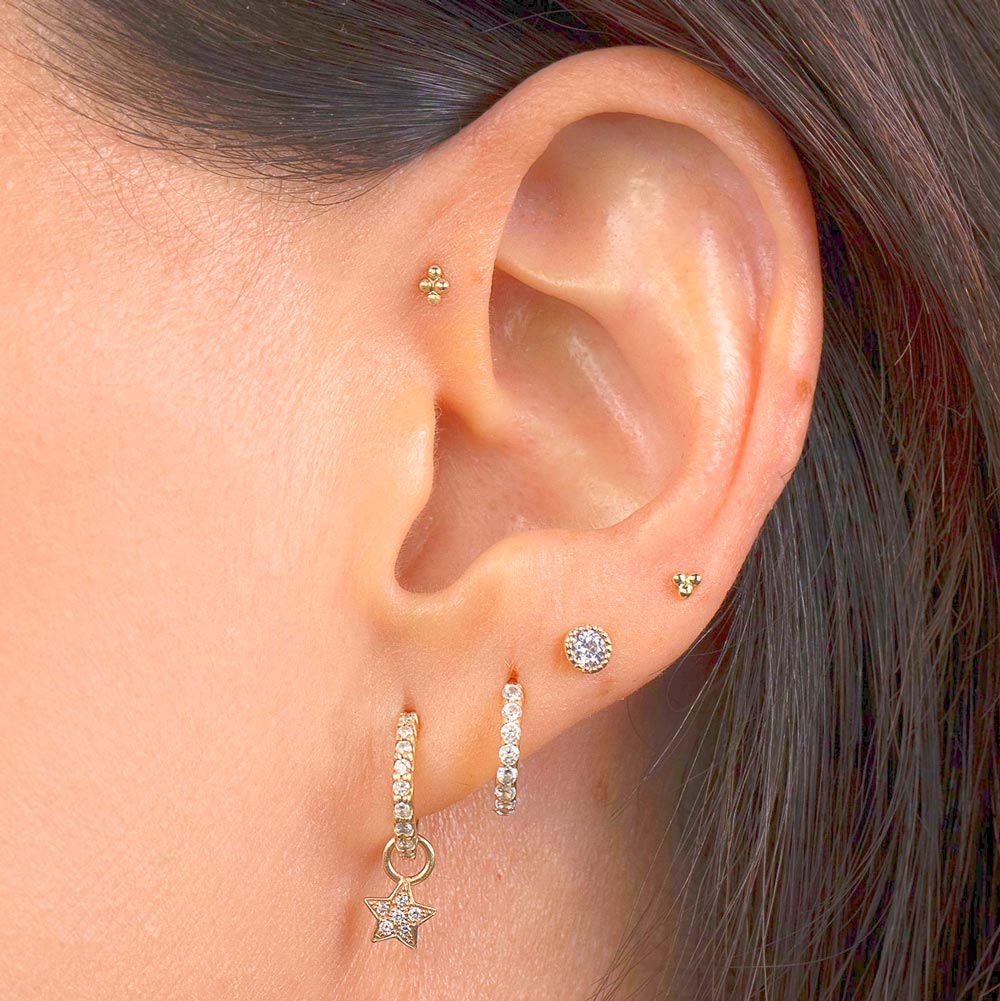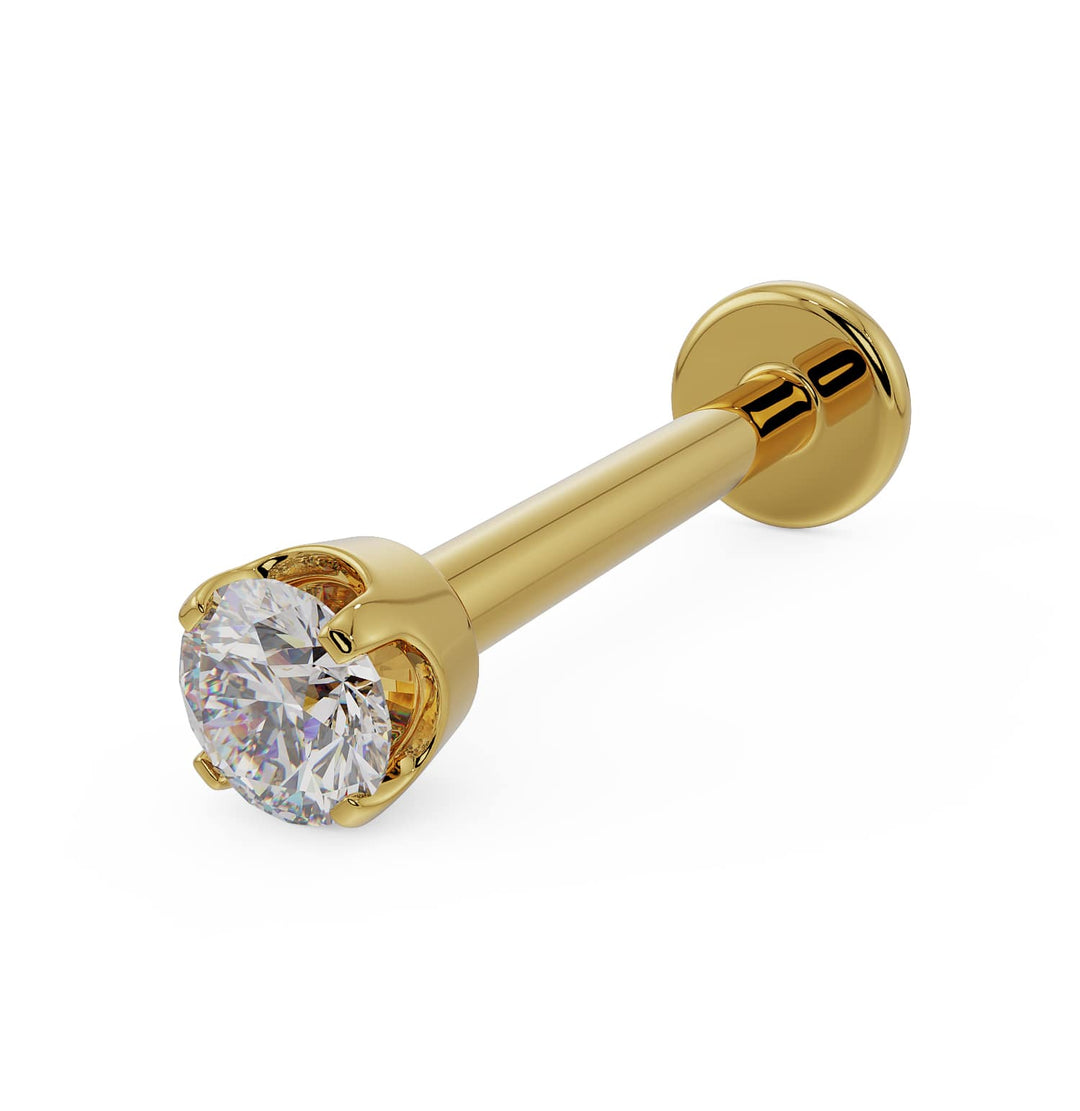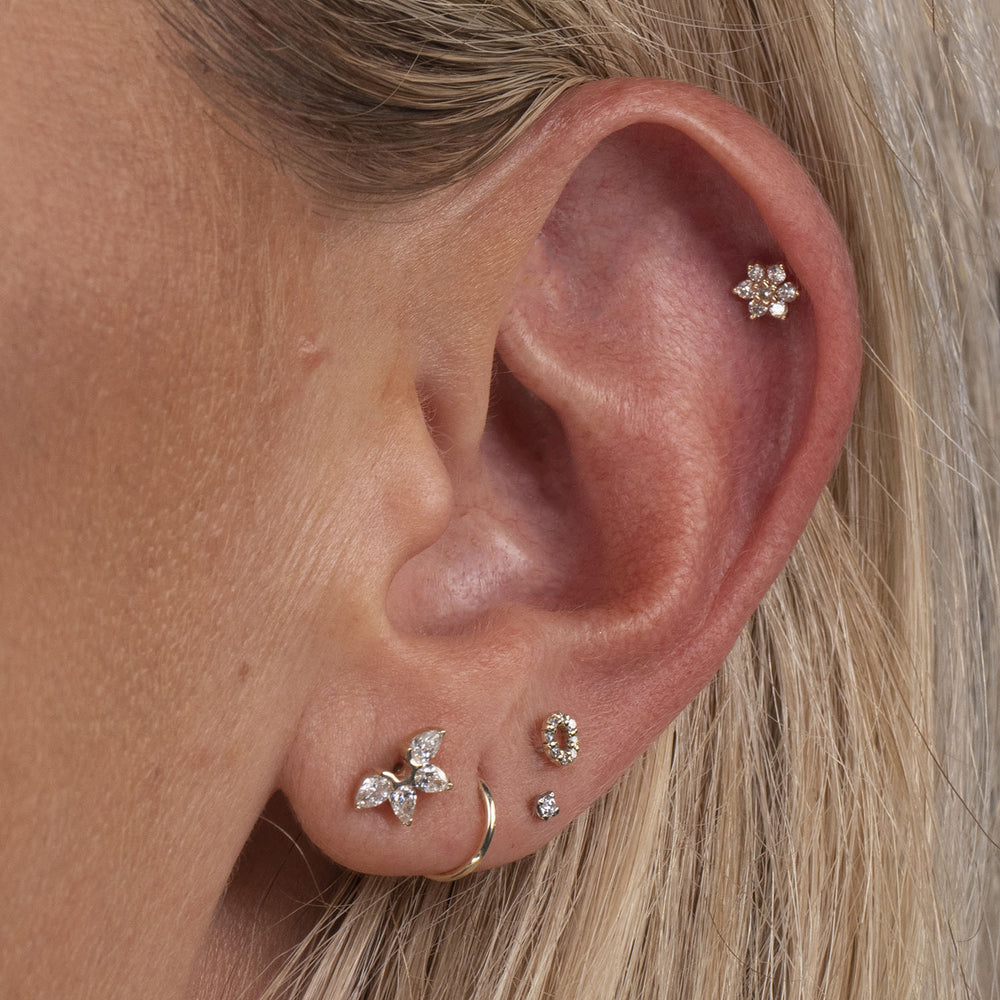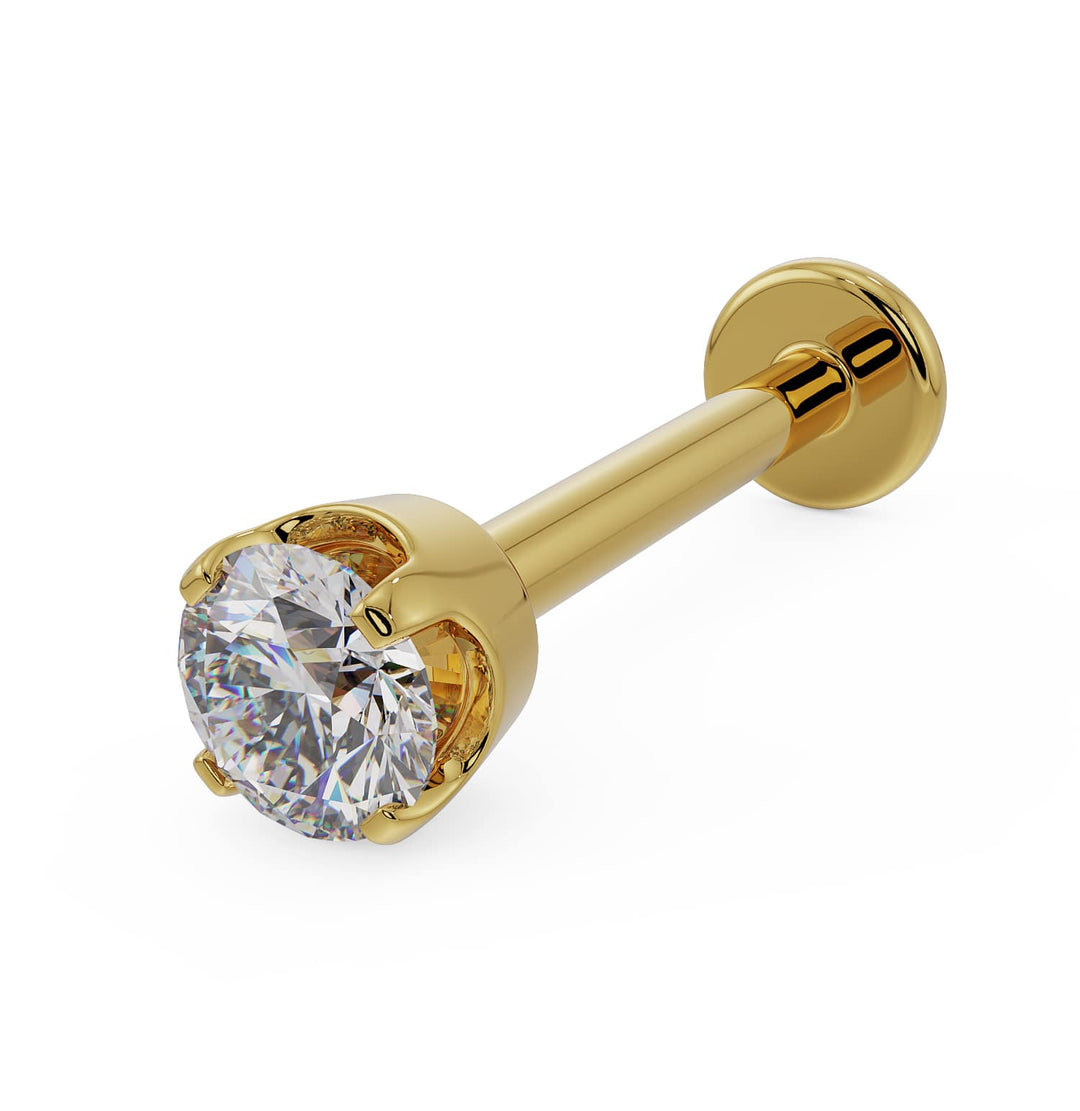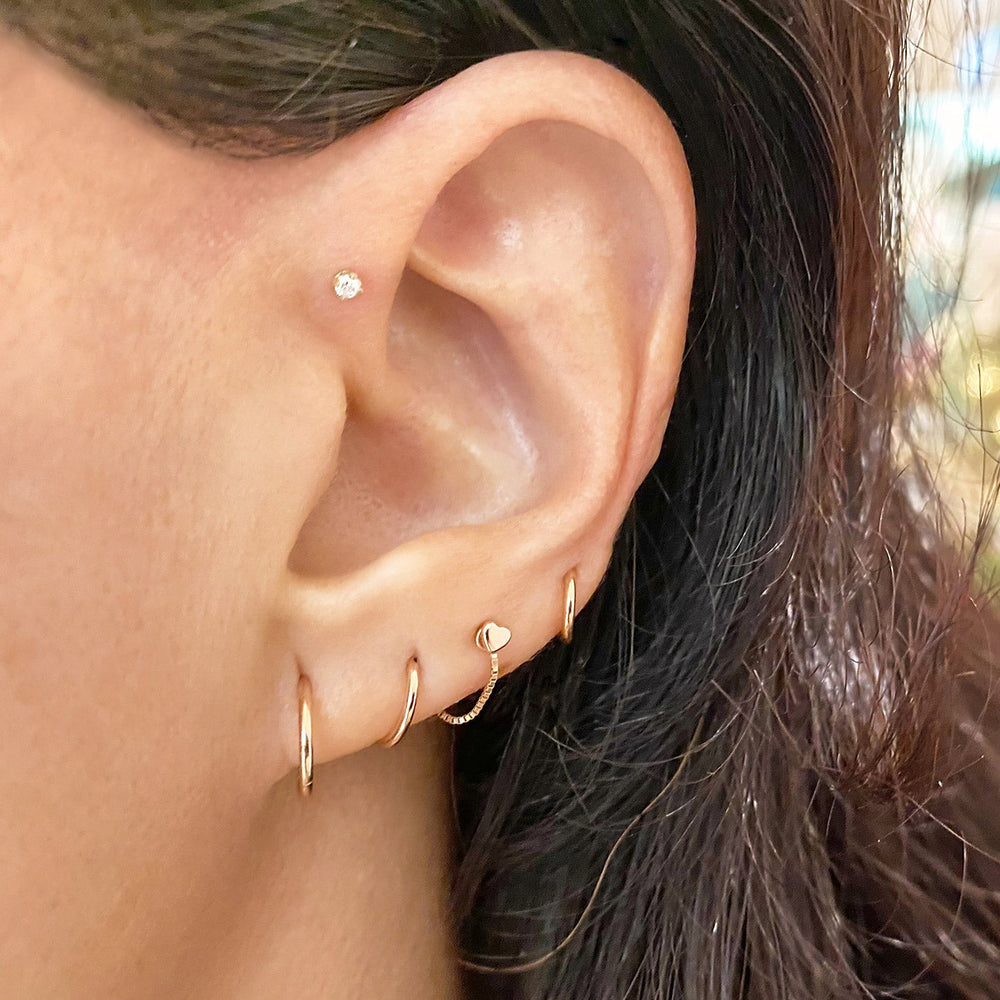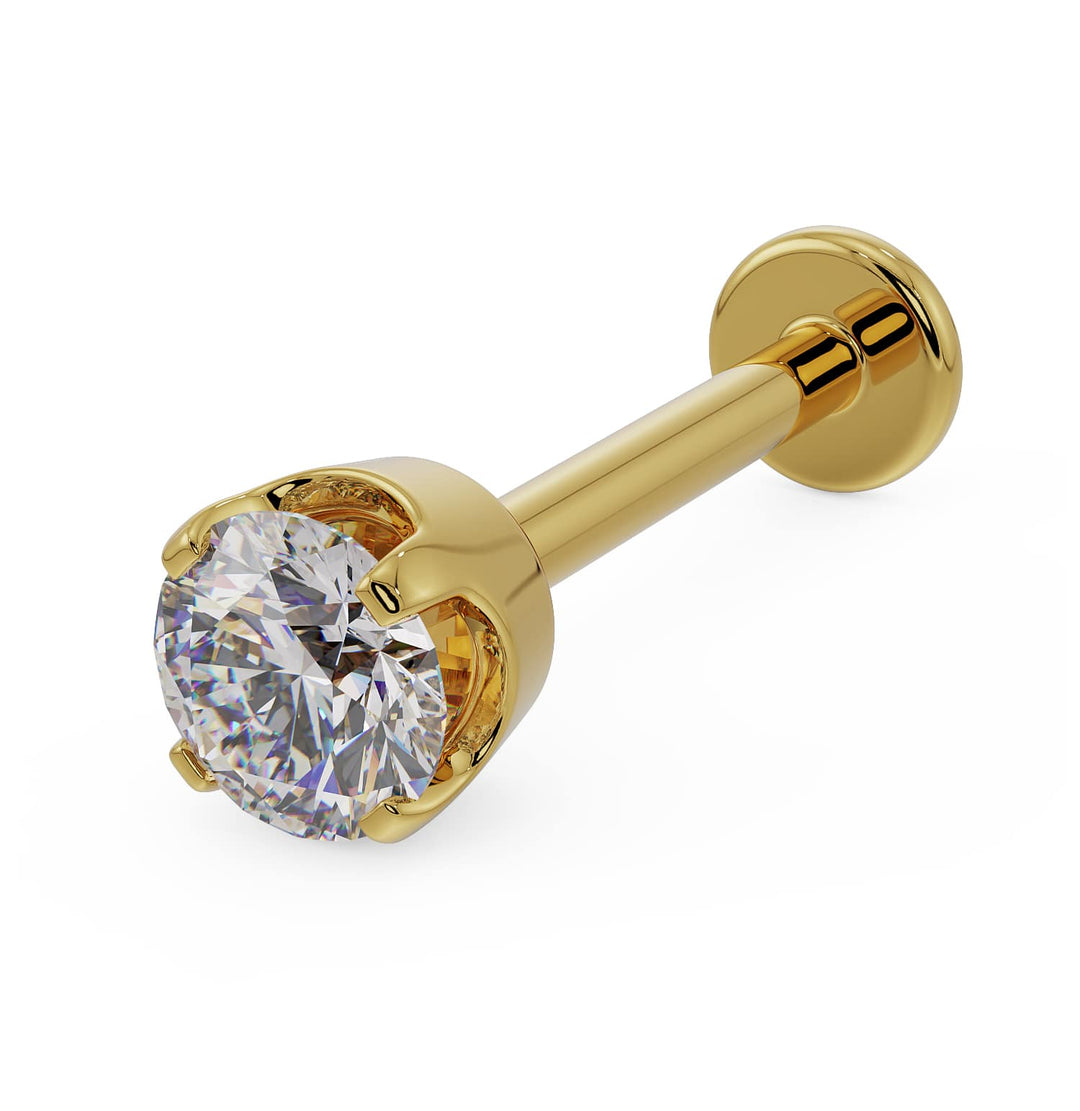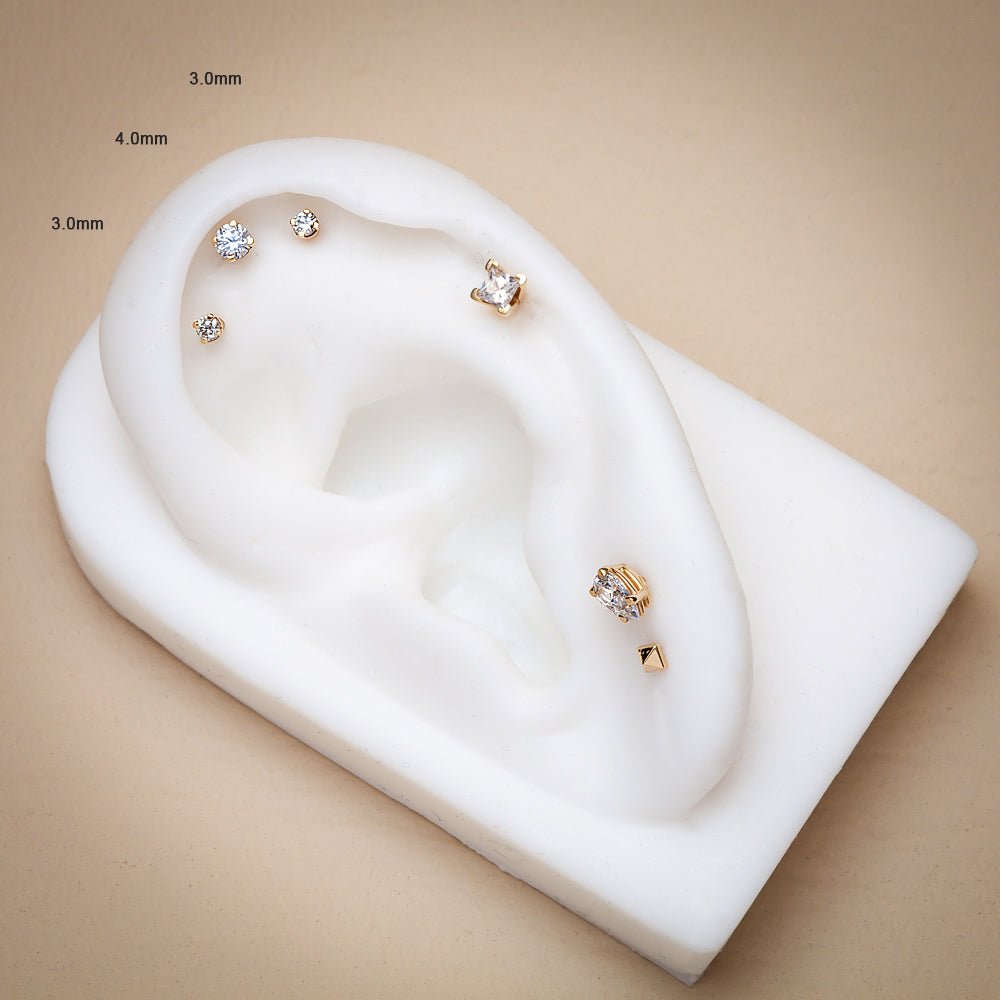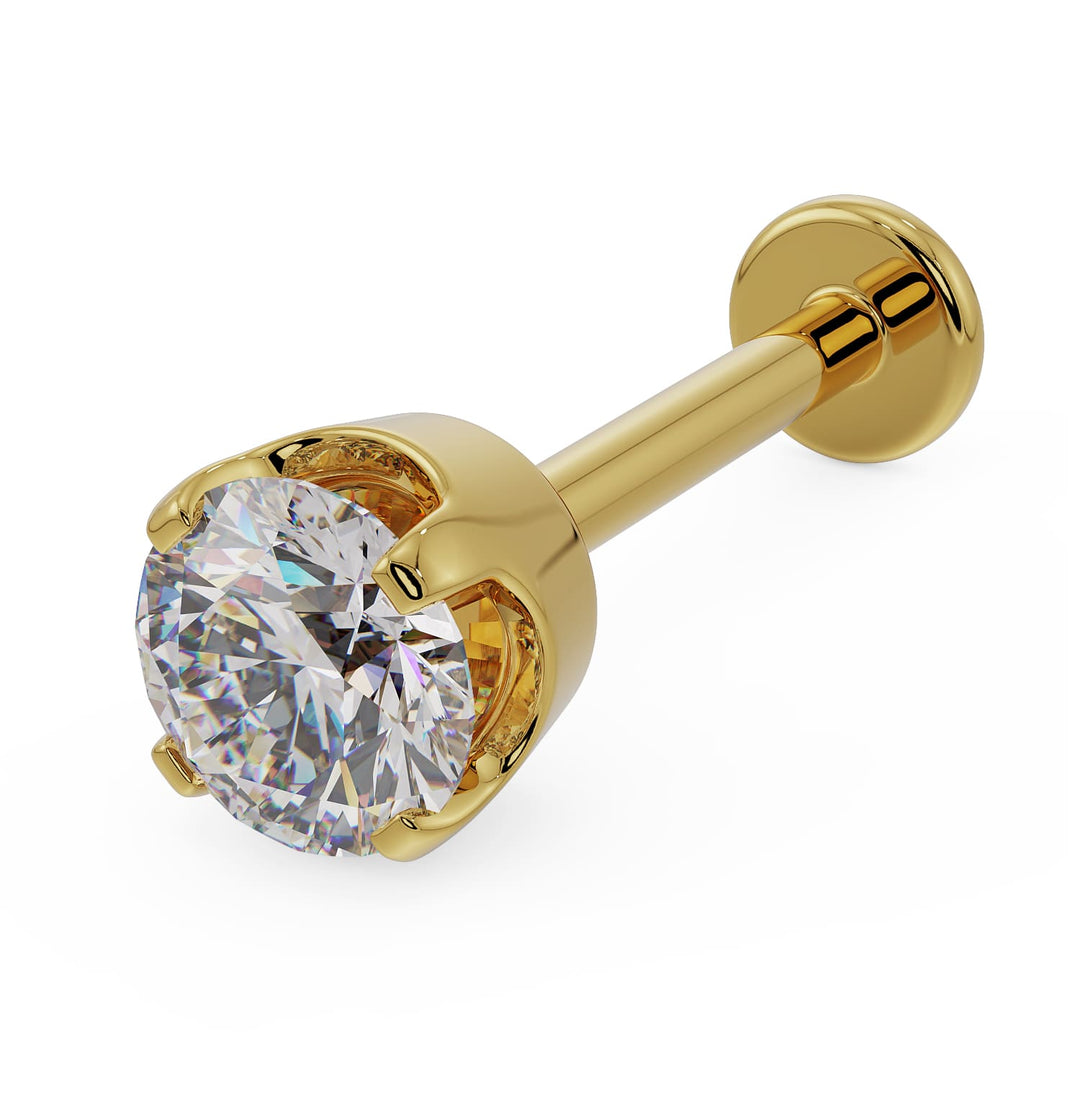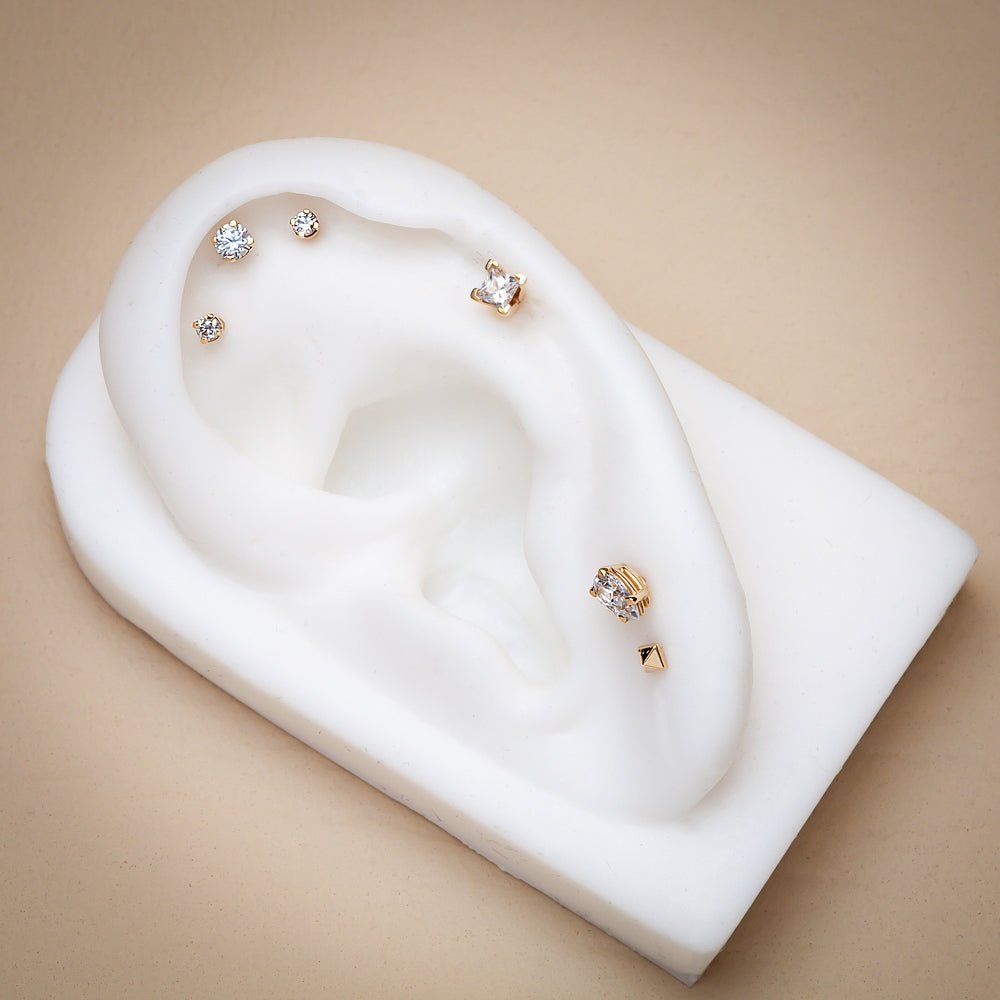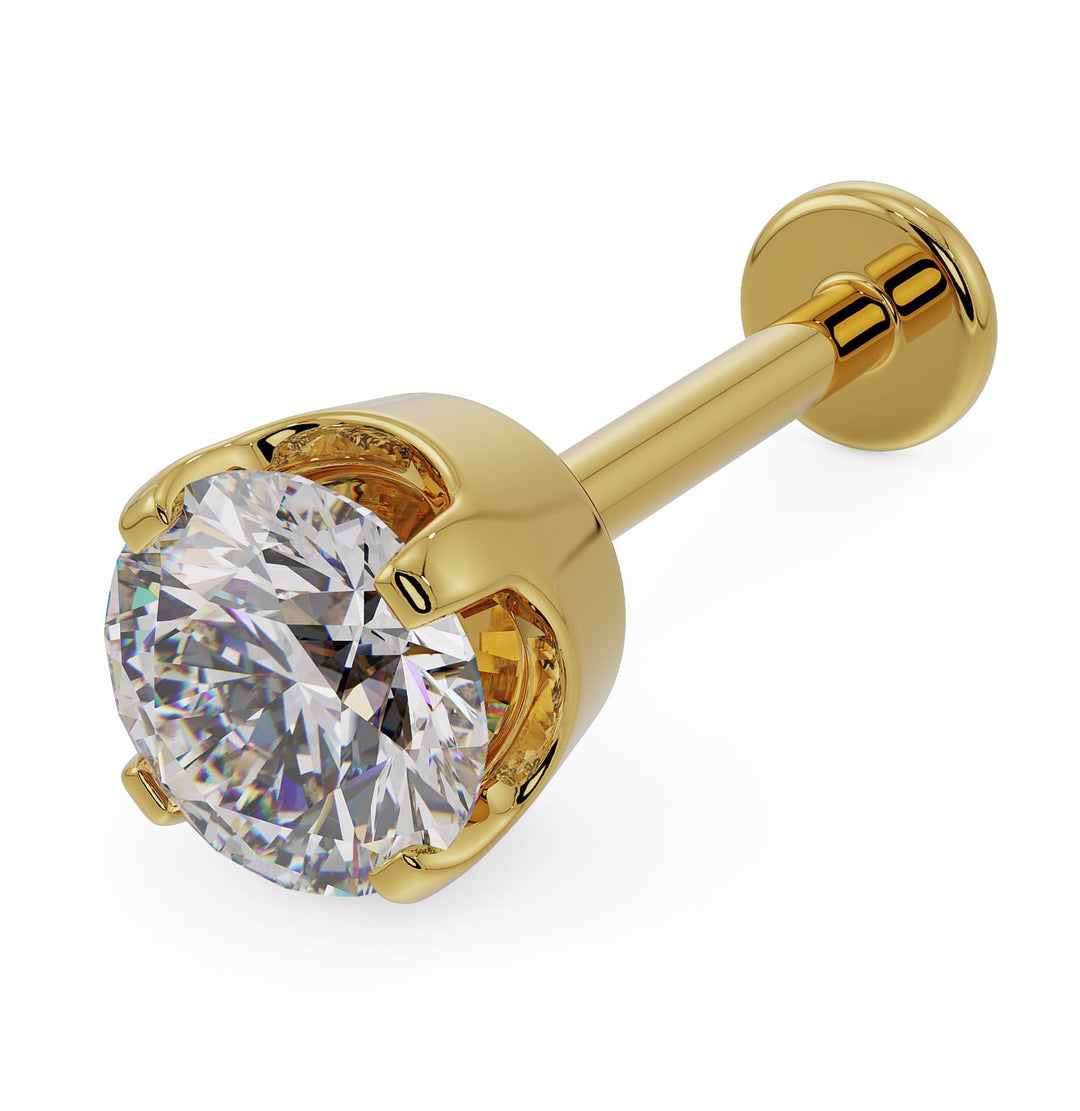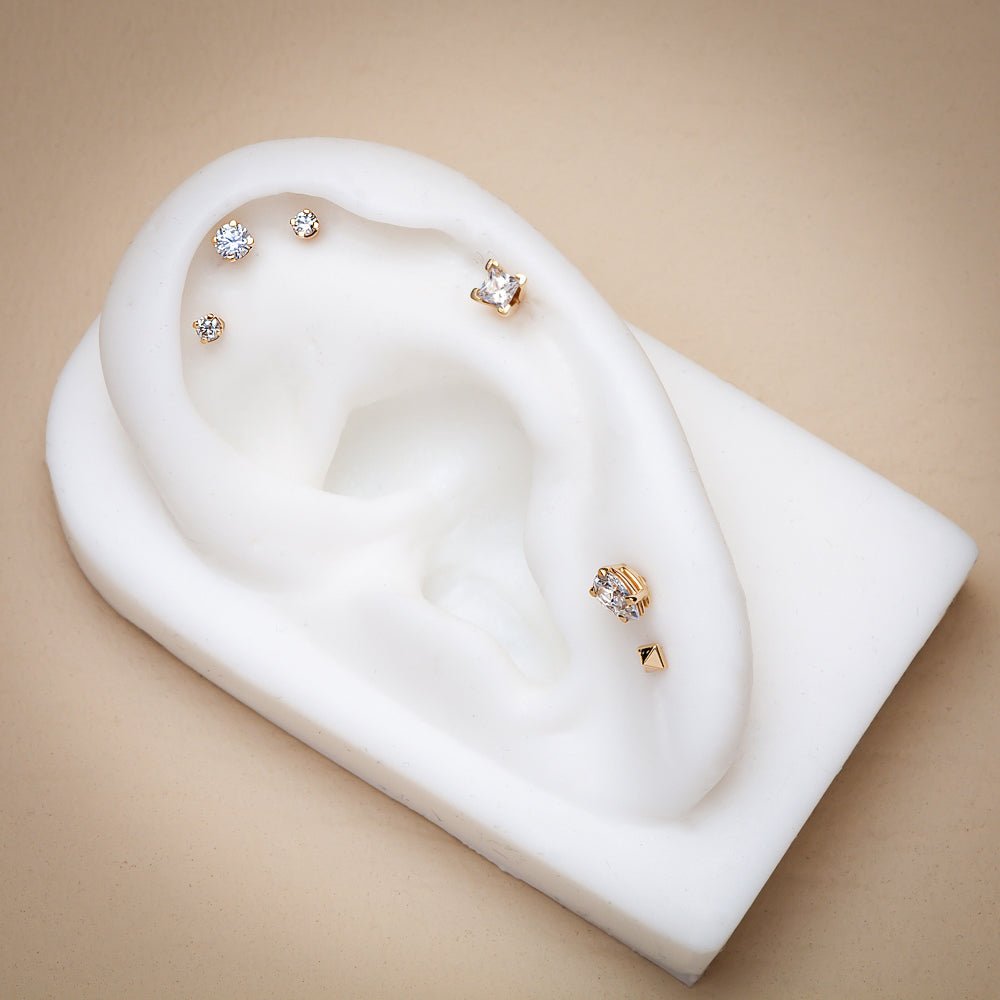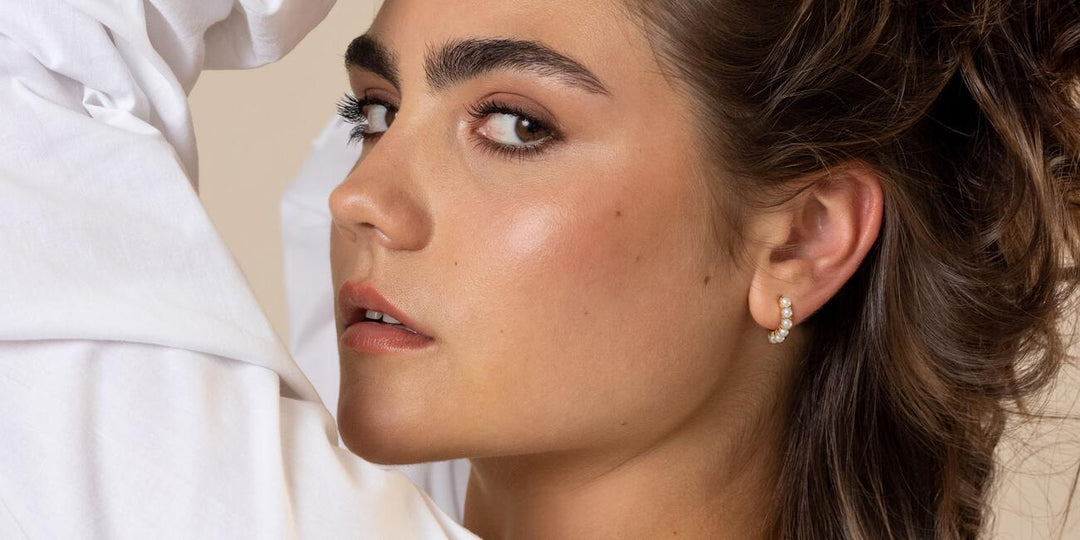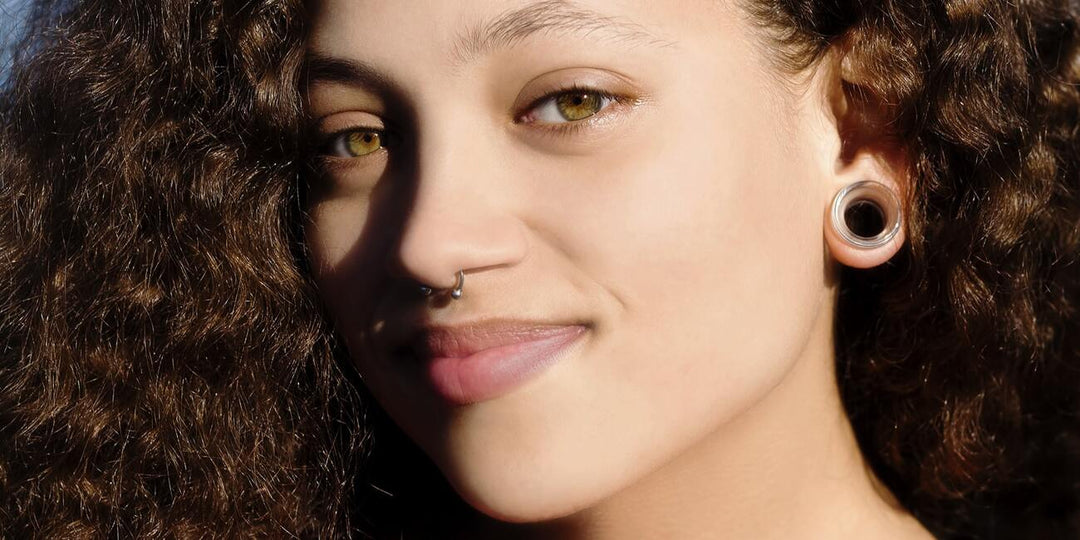Cartilage Piercings & Jewelry Guide
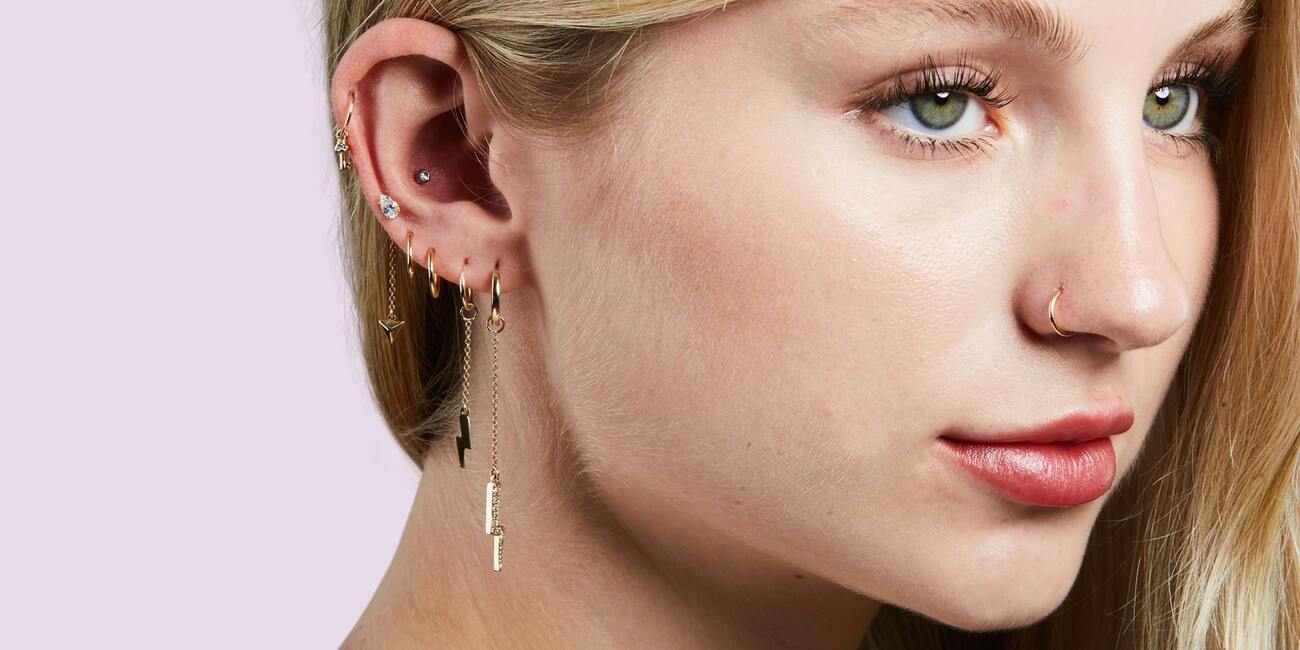

With so many desirable ways to pierce your ears, the sky’s the limit when it comes to choosing which cartilage piercing to get. And when it comes to piercing beyond the earlobe, the bar is raised even higher. Cartilage piercings have become very popular among working professionals and are widely expressive in casual settings. Ear parties are becoming super trendy since they allow you to create your own style by mixing and matching different types of earrings. From helix to daith and rook piercings, whatever type of cartilage earring or bling you wear will show off your personal flair.
- Here's a simple guide to help you learn about the different types of ear piercings and the jewelry for them.
- Most cartilage piercings are done with a straight barbell or captive bead ring made of solid gold or high-quality titanium.
- The standard size for a cartilage piercing is 16 gauge (16G), though 18G is sometimes used.
- Make sure to follow a daily cleansing routine for your new piercing and always know the size of your piercing.
FreshTrends Tips
Types Of Cartilage Piercings
Helix Piercing
Also known as the rim, the helix piercing is where the upper ear cartilage is pierced. In most instances, a piercer will puncture the ear using a free-hand method when creating a helix piercing.
Hardware: The most popular jewelry for this type of piercing are hoops such as seamless rings, captive bead rings (CBRs), or cartilage studs. The standard size is 18G, however, some consider 16G to be more ideal. Since cartilage does not stretch easily, many find it better to start off with a larger gauge in case certain cartilage earrings are not offered in a lower gauge.
Placement: Helix earrings are typically found just beyond the highest point of the rim opposite the forward helix, but it can be placed anywhere on the rim of the upper cartilage.
Healing: Depending on individual aftercare practices, helix piercings usually take anywhere from 6 months to a year to heal.
Tragus Piercing
Another popular piercings is the tragus piercing. The tragus is the portion of cartilage that is located directly in front of the ear canal. The puncture itself, which usually isn't very painful due to the limited number of nerve endings in the tragus, is usually made with a small gauge hollow piercing needle.
Hardware: A cartilage stud with a flat disc backing is typically used in the tragus, but small captive bead rings or hoops are also common. We have a great selection of gold tragus earrings to choose from when you're ready to change out your jewelry.
Placement: The tragus is generally pierced through its center. Your piercer will use a low-gauge needle that's either straight or curved, depending on their preferred technique.
Healing: Tragus piercings can take anywhere from 12 weeks to 12 months to heal, depending on care.
Industrial Piercing / Scaffold
Commonly known as an industrial piercing, a scaffold piercing combines two piercings with a hollow needle to connect a single piece of jewelry.
Hardware: A 14G 1-inch industrial barbell is typically used, though a 16G can also be considered. Cartilage studs are often used as starter jewelry and later replaced with a barbell. While studs may result in faster healing, aligning the piercings can be more challenging.
Placement: An industrial piercing usually involves the helix and anti-helix. The most popular placement spans from the forward-helix to the lower section of the helix near the auricle. The barbell is inserted from behind the ear, going diagonally through both piercings, and secured with a screw-on bead behind the second hole.
Healing: Industrial piercings typically take 6 months to 1 year to heal, depending on the individual and aftercare practices.
Daith Piercing
The daith piercing (pronounced "doth") involves the perforation of the crus of the helix (the flap of cartilage right above your ear canal) using a curved needle so as not to puncture or damage the surrounding cartilage. A receiving tube may be used to assist in the procedure to ensure that the needle is caught on the other side.
Hardware: More often than not, hoop jewelry such as captive bead rings or seamless rings are used. Clickers rings are also an excellent choice for daith piercing jewelry for their ease of use.
Placement: The daith will only be placed in the fold of cartilage directly above the ear canal.
Healing: Estimated healing time is 4 months to 1 year.
Shop RELATED COLLECTIONS
Lobe Piercing
Undeniably the most common area to be pierced, the lobe is considered both the largest and softest part of the ear. Due its size, the lobe is capable of accommodating as many as three or four piercings.
Hardware: Lobe piercings are usually done with a very small gauge. You can choose earring studs, hoops, dangles, or open hoop dangles. The best type of jewelry for your ear piercing are gold earrings, as many people with metal allergies can tolerate nickel-free 14k gold in their piercings.
Placement: The size and space of the lobe allows for a multitude of placement options. It's up to your preference.
Healing: With the most soft-tissue found anywhere on the ear, the earlobe also takes the least amount of time (approximately 1 to 2 months) to heal.
Conch Piercing
The conch piercing has two types: the inner conch piercing and the outer conch piercing. The inner conch is located lower in the ear, while the outer conch is located closer to the helix.
Hardware: A variety of jewelry can be worn here including barbells, large diameter CBRs or other hoops, and studs.
Placement: The conch refers to the cartilage at the center of the ear. The inner conch piercing is the cup-shaped portion adjacent to the ear canal, while the outer conch is the flat cartilage portion below the helix. When piercing either conch, a 14G barbell is recommended, but a 16G would still yield a healthy piercing.
Healing: The healing period can be extensive at up to 12 to 18 months for full healing.
Rook Piercing
Widely considered one of the more painful piercings, the rook piercing is a relatively difficult procedure.
Hardware: Piercers will often use a 14G or 16G needle with a CBR or curved barbell as starter jewelry for the rook piercing, though once your piercing is healed, there are tons of great gold jewelry options for rook piercings.
Placement: The rook is located in the anti-helix of the ear. The exact placement will probably depend upon your ear's anatomy and whether the piercer can properly reach the area for a clean, healthy piercing.
Healing: Like other cartilage piercings, the rook piercing could take around 12 - 18 months to fully heal.
Forward Helix Piercing
A variation of the helix piercing, the forward helix piercing is when the portion of the upper ear cartilage closest to the head is pierced. In most instances, a piercer will puncture the ear using a free-hand method when creating a forward helix piercing. It's also quite common to pierce the forward helix multiple times for a double- or triple-forward helix. The placement of this piercings is it a little more complicated than a other cartilage piercings, so may cost a bit more, depending on your piercer.
Hardware: The most common body jewelry types for the forward helix piercing are CBRs, seamless hoops, or small helix studs with flat disc backing. The standard hole size is typically 18G.
Placement: The forward helix consists of any piercing between the apex of the helix and where the helix joins the head.
Healing: Depending on individual aftercare practices, forward helix piercings may take anywhere from 3 months to a year to heal.
Shop RELATED COLLECTIONS
Anti-Tragus Piercing
An anti-tragus piercing sits opposite the tragus piercing and fits similar types of jewelry.
Hardware: Small gauge studs, barbells, and captive bead rings are the ideal types of jewelry used for the anti-tragus piercing.
Placement: Placed within the portion of cartilage opposite the ear canal, the anti-tragus proves to be a unique alternative to the tragus piercing for those who want something a little more unique or have a tragus that's too small for piercing.
Healing: Anti-tragus piercings can take anywhere from 6 to 12 months to heal, depending on care.
Snug Piercing
The snug piercing is placed in the middle fold of the inner ear cartilage toward the rim of the ear. Placed neatly among the folds of your ear, the snug piercing certainly lives up to its name.
Hardware: Because of location of the snug piercing, only small earrings like curved barbells or small hoops can be used for this piercing style.
Placement: Nestled near the lower-mid portion of the ear’s outer rim, snug ear piercings pass through the cartilage above your anti-tragus, producing a snug fit.
Healing: The healing process for this procedure ranges from 2 - 4 weeks, but full healing can take up to one year.
Transverse Lobe Piercing
Consisting of a horizontal piercing of the earlobe, the transverse lobe piercing is truly one of the more unusual piercing styles.
Hardware: Curved or straight barbells and captive bead rings are ideal for this type of piercing. The type of jewelry you can use will depend upon the anatomy of your ear; curved barbells are best for attached earlobes while detached lobes prefer straight barbells.
Placement: A horizontal transverse lobe piercing travels from the edge of the lobe closest to the cheek to the middle-edge of the earlobe. With an attached earlobe, the piercing is placed a little lower. Other variations of the transverse lobe include the vertical and diagonal lobe piercings.
Healing: On average, the healing process for transverse lobe piercings can take anywhere from 2 to 10 months.
Dermal Punch
A dermal punch uses an extremely sharp blade to make a perfectly cylindrical piercing within the ear’s cartilage. A portion of the skin is completely removed in order to create a larger gauge in areas, like the cartilage, where stretching the skin is either difficult or impossible.
Hardware: When performing a dermal punch, a 14G up to a 0G plug can be fitted once the procedure is complete.
Placement: Dermal punches can be performed in various areas of the ears’ cartilage, but should NEVER be used on earlobes since it will remove tissue and hamper future stretching with lobe plugs.
Healing: Although a large chunk of tissue will be removed, dermal punches will often take less time to heal than their pierced counterparts. Healing times will depend on the location and size of the punch.
